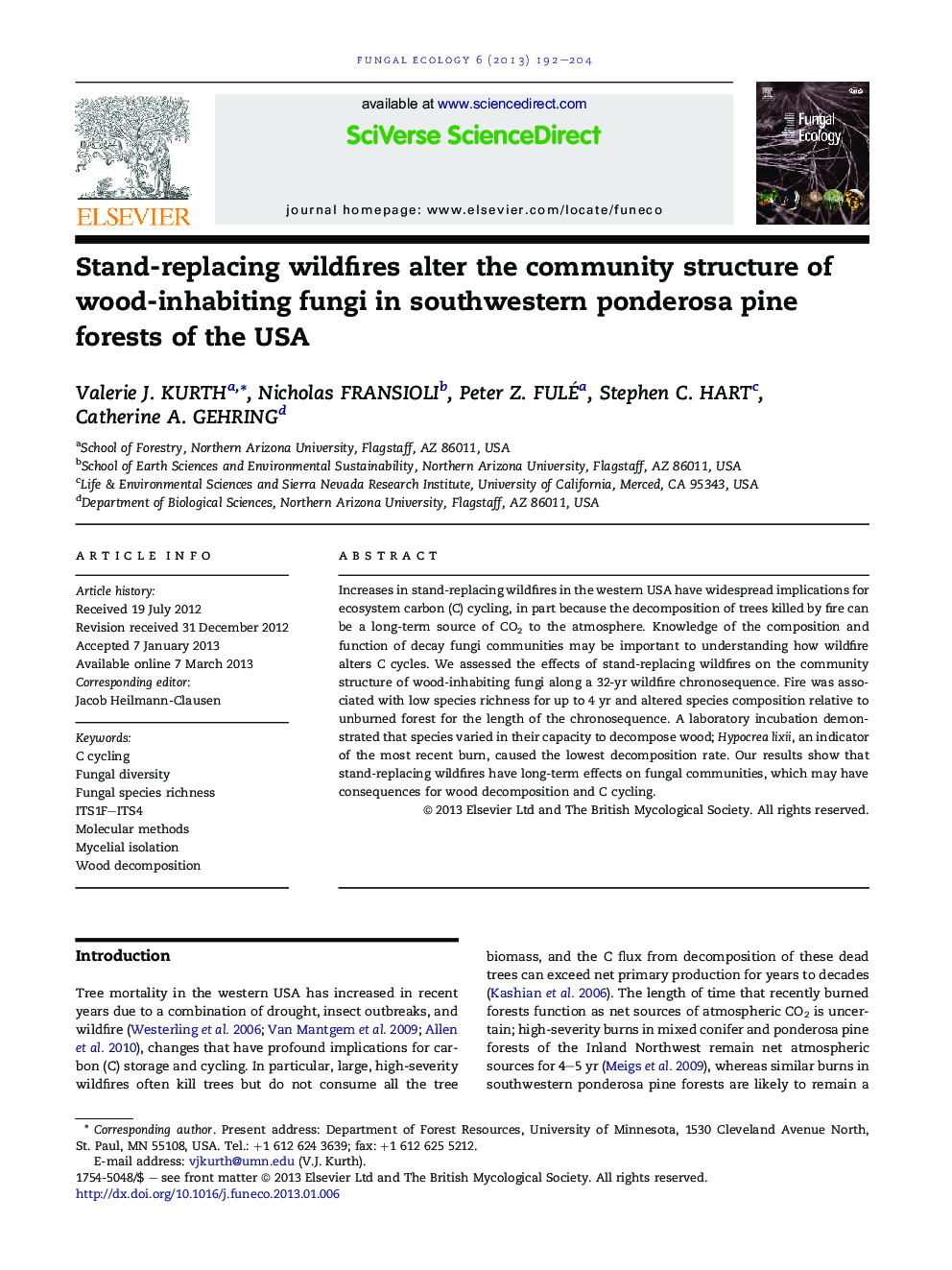| Article ID | Journal | Published Year | Pages | File Type |
|---|---|---|---|---|
| 2053630 | Fungal Ecology | 2013 | 13 Pages |
Increases in stand-replacing wildfires in the western USA have widespread implications for ecosystem carbon (C) cycling, in part because the decomposition of trees killed by fire can be a long-term source of CO2 to the atmosphere. Knowledge of the composition and function of decay fungi communities may be important to understanding how wildfire alters C cycles. We assessed the effects of stand-replacing wildfires on the community structure of wood-inhabiting fungi along a 32-yr wildfire chronosequence. Fire was associated with low species richness for up to 4 yr and altered species composition relative to unburned forest for the length of the chronosequence. A laboratory incubation demonstrated that species varied in their capacity to decompose wood; Hypocrea lixii, an indicator of the most recent burn, caused the lowest decomposition rate. Our results show that stand-replacing wildfires have long-term effects on fungal communities, which may have consequences for wood decomposition and C cycling.
► We used mycelial isolation and molecular techniques to identify wood-inhabiting fungi. ► Wildfire was associated with short-term reductions in fungal species richness. ► Wildfire was associated with long-term alterations in fungal community composition. ► A subset of species tested varied in their capacity to decay wood. ► The majority of species isolated were ascomycetes, with only a few basidiomycetes.
